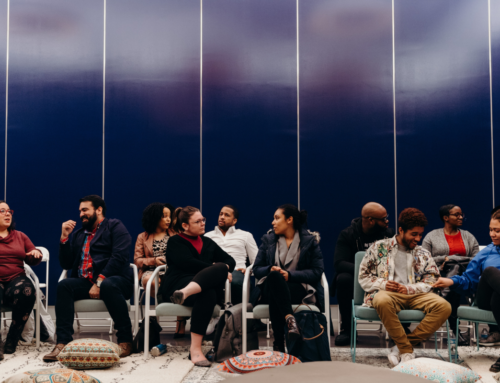The case for diversity and inclusion: A leadership masterclass with renowned professor
Q. What’s the secret to making a great decision?
A. Making sure your team is diverse.
Great leadership relies on good decision-making.
And when you add age + gender + racial + geographic diversity to your team you have a much better chance of making a correct decision.
Inclusify author Dr. Stefanie K. Johnson is a professor and keynote speaker who studies the intersection of leadership and diversity points out why diversity and inclusion is a no-brainer.
The business case for diversity and inclusion
She says studies show:
· A diverse team made correct decisions 87% of the time.
· An all-male team made correct decisions 58% of the time.
Differing points of view mean errors are spotted more easily.
And there’s move evidence for leaders to focus on diversity:
· 67% of job seekers consider diversity when assessing companies to work for.
· 57% of team members wish their own company would do more to promote diversity.
How to improve diversity and inclusion in your team
While 66% of companies claim to have inclusion strategies, only 25% have concrete plans in place.
What stands in our way? Why don’t we have more diversity?
Dr Johnson says there are two reasons:
· Unconscious bias
· Inclusion gaps
Here, she shares her research on how we can overcome both.
The ABCs of breaking bias:
· Admit it – We are human, biases are there.
· Block it – Redesign the system (ie. anonymise resumes).
· Count it – Set specific numeric targets…(one masterclass delegate said her company set a goal of 40% female, 40% male, 20% flexible).
· Support it – Champion diversity
What does it mean to feel included?
Feeling included is where you can stand out but also fit in. It’s the feeling that you can still be yourself while being an essential, valued member of the team.
Inclusive companies perform even better:
· 5% lower turnover for inclusive teams
· 83% of millennials reported feeling engaged in inclusive cultures vs 60% in non-inclusive.
· Work attendance improves; inclusive companies outperforming other companies by 8:1.
Masterclass delegates shared examples of times they’d felt excluded:
“Not being invited to meetings” “I felt I was working in a men’s locker room” “Having your point of view heard even when it’s different to others” “Excluded from a committee because there were already too many men in the team” “When you’re told about something after the fact” “Excluded from social events…”
More people are faking feeling included or feeling unaccepted
Dr Johnson pointed out that inclusion means both social and task aspects of work.
“You want to be included in tasks. But you also want to feel like you belong. You also want the social side, when people are walking down the hallway chatting about their weekend you want to be included.”
· Included – you feel valued for who you are
· Incomplete – you feel accepted but you’re faking it. (they were invited but they had to mask who they really are, they’re exhausted. They’re keeping up this cover. They want too just be themselves)
· Invisible – you feel unaccepted and unknown (it’s even more of an epidemic than before during the pandemic, nobody sees what you’re doing, you could be isolated)
· Insular – you feel unaccepted but you “do you” (they are seen as very different).
We want to celebrate difference and still be part of the team.
3 steps to increase inclusion:
1. Redesign meetings.
· Send questions in advance. Not everyone thinks well out loud.
· Plan a discussion. Think of it yourself as a curator of ideas.
· Reward (or create) dissention. Try nominating a “devil’s advocate.”
· Think like a detective. Each person has a piece of the puzzle. Dig to get all the ideas.
2. Amplify
· Only 35% of people feel comfortable contributing during meetings.
· So amplify the voices in the room. Help others voice their ideas: ”I see you’ve unmuted, “I’m going to pause after this…and hear from….”
3. Develop others.
• Ask about career goals.
• Map out key experiences and connections.
• Set a timeline.
• Give feedback and recognition.
Mentoring shows a diversity gap
Mentoring: 36% of men don’t mentor women because how it might look, and women are 24% less likely to get advice from top leaders. 71% of mentoring relationship are same race and sex. Both mentors and mentees were more likely to get promoted, and less likely to want to leave.
Being recognised is key to feeling belonging
Recognition : 65% of employees have not received recognition in the past year. 29% of employees who were recognized in the last month feel a strong sense of belonging at work compared to 8% who weren’t recognized.
“Inclusifying is the leadership skill of tomorrow, but you can capitalize on it today. It starts with understanding the two most basic human drives: to be unique and to belong.” – Dr Stefanie K Johnson, Inclusify











Leave A Comment